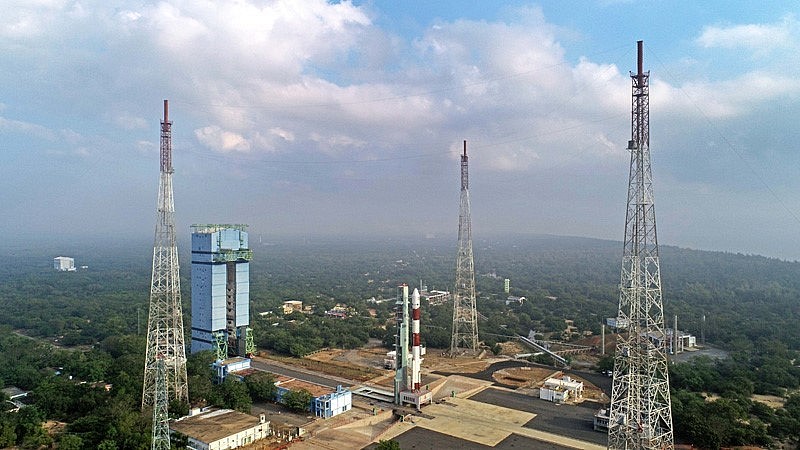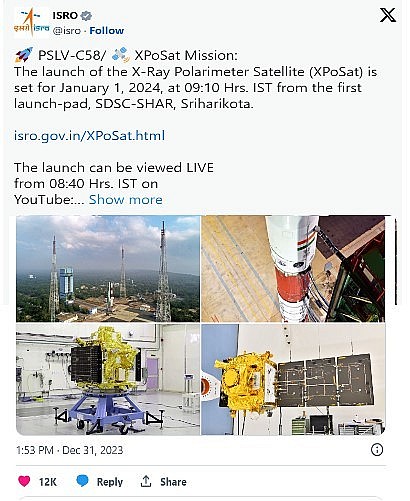India's ISRO to launch polarimetry mission to study Black Holes today
 |
The Indian Space Research Organisation or ISRO will mark the first day of the year with the launch of the country's first dedicated polarimetry mission to study various dynamics of bright astronomical X-ray sources in extreme conditions on Monday (January 1, 2024).
The launch of the X-Ray Polarimeter Satellite (XPoSat) going to take place at 09:10 Hrs. IST from the first launch-pad, SDSC-SHAR, Sriharikota.
"The emission mechanism from various astronomical sources such as blackhole, neutron stars, active galactic nuclei, pulsar wind nebulae etc. originates from complex physical processes and are challenging to understand," read the ISRO website.
XPoSat (X-ray Polarimeter Satellite) is India’s first dedicated polarimetry mission.
 |
The spacecraft will carry two scientific payloads in a low earth orbit. The primary payload POLIX (Polarimeter Instrument in X-rays) will measure the polarimetry parameters (degree and angle of polarization) in medium X-ray energy range of 8-30 keV photons of astronomical origin.
The collimator restricts the field of view to 3 degree x 3 degree so as to have only one bright source in the field of view for most observations.
POLIX is expected to observe about 40 bright astronomical sources of different categories during the planned lifetime of XPoSat mission of about 5 years. This is the first payload in the medium X-ray energy band dedicated for polarimetry measurements.
XSPECT is an X-ray SPECtroscopy and Timing payload onboard XPoSat, which can provide fast timing and good spectroscopic resolution in soft X-rays.
Taking advantage of the long-duration observations required by POLIX to measure X-ray polarization, XSPECT can provide long-term monitoring of spectral state changes in continuum emission, changes in their line flux and profile, simultaneous long-term temporal monitoring of soft X-ray emission in the X-ray energy range 0.8-15 keV. An array of Swept Charge Devices (SCDs) provide an effective area >30 cm2 at 6 keV with energy resolution better than 200 eV at 6 keV.
Passive collimators reduce the background by narrowing the field of view of XSPECT. XSPECT would observe several types of sources viz X-ray pulsars, blackhole binaries, low-magnetic field neutron star (NS) in LMXBs, AGNs and Magnetars.
Recommended
 World
World
Trump’s Tariff Pause: A Strategic Move from “The Art of the Deal”?
 World
World
"Indian Navy's participation in AIKEYME exercise matter of great happiness": Admiral Dinesh Kumar Tripathi
 World
World
ASEAN and US Tariff Dilemma: Hybrid Approach to Global Trade Tensions
 World
World
Vietnam Affirms Its Active and Responsible Role at UNESCO
 World
World
US Imposes 125% Tariff on China, Pauses Tariffs for 90 Days on Over 75 Countries
 World
World
"Massive financial deficits with China, EU can only be cured with tariffs": Donald Trump
 World
World
Modi’s Sri Lanka Visit: A Diplomatic Triumph Amid Regional Tensions
 World
World
